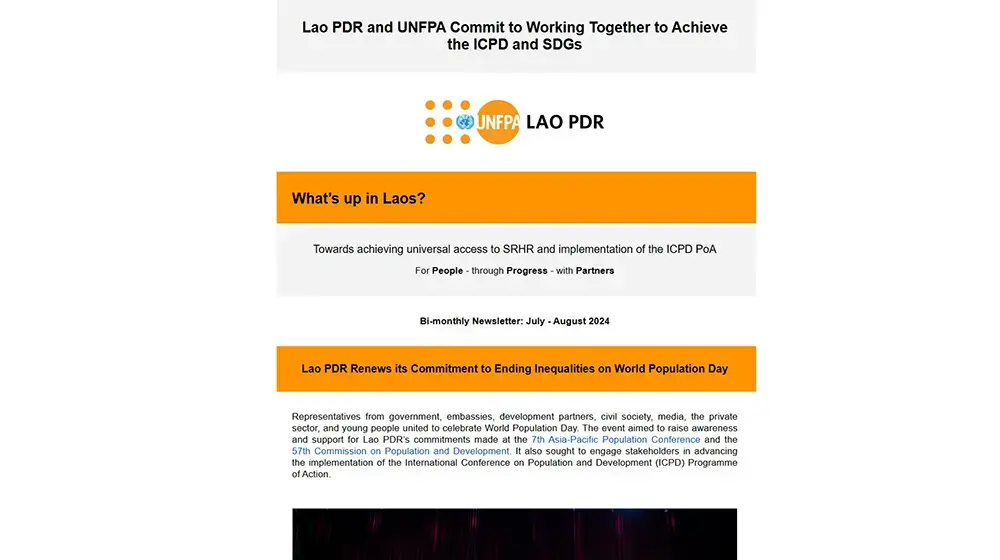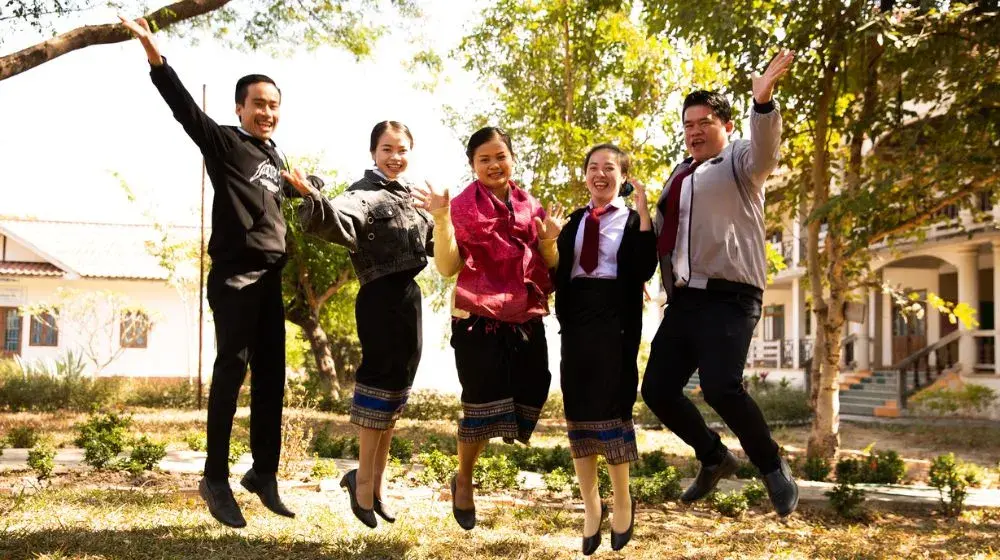Lao PDR has one of the youngest populations in Southeast Asia, with over half (50.8%) of the population being between the age of 10 and 35 years (Lao Statistics Bureau [LSB], 2015). The age structure and demographic transition present an advantageous direction and great potential to reap the demographic dividend in the years to come.
Poverty reduction and sustainability of the Least Developed Country (LDC) graduation process go hand in hand with greater investments in human capital, especially in adolescents and youth. The Cotonou Ministerial Declaration of the Least Developed Countries (2014) highlighted human capital and social investment as the key for countries to benefit from demographic dividend: “The demographic transition is key to building human capital and harnessing the demographic dividend. To this end, there should be strengthened collective efforts by LDCs and their development partners to realize the demographic dividend in LDCs by pursuing effective policies and actions on education, training, employment primary health, including voluntary family planning, girls and women empowerment, gender equality and issues of development related to youth”.
Population projections show that Lao PDR will see the rise of the working-age population by 2040. If today’s adolescents and youth receive a good education, good health care, and other social support, when they reach working ages, they will have the potential to achieve higher levels of labor force participation and higher wages than previous generations, thus promoting a more productive and competitive economy for Lao PDR.
The momentum has come for the government to increase human capital and social investment through the 9th National Economic and Social Development Plan for 2021-2025 (9th NESDP). It will be a road map to guide Lao PDR’s graduation from the LDC status and the sustainable development in line with the 2030 development agenda. The national plan sets national priorities and guides the planning and implementation of different sectors and at the sub-national level.
Over the next two decades, the growing young age group in Lao PDR will continue to place greater demands on public services and resources. To harness the potential demographic dividend into economic and social gains, the government will need to continue investing in economic, social and governance policies and accelerate investments in human capital, promoting equity and addressing dimensions of poverty and women and youth empowerment.
Investing in adolescents and young people in Lao PDR is a critical factor in the country’s quest for sustainable development. With young people taking up to over half of its total population, Lao PDR has a high adolescent birth rate (83 per 1,000) and low secondary school completion rate, particularly among girls, as well as the high rate of child marriage (23.5 per cent of girls aged 15-19). Investments in adolescents, particularly girls, can improve the health and educational status of families and communities, directly contributing to a reduction in child marriage, early pregnancy, maternal mortality, malnutrition, stunting, and growth in the economic development of the country.
Since 2016, under the coordination of the United Nations Population Fund (UNFPA), the 2030 Noi Framework was put in place as a multi-stakeholder platform to advocate for greater investment in adolescent girls and young people represented by Noi. With full support from the government and participating agencies, an ecosystem for Noi has been taking shape with positive results in the areas of life skills education, health, particularly sexual and reproductive health. The 2030 Noi Framework also garnered new partners, including from the private sector, to reach the most marginalized groups.
Last year was the 25th anniversary of the landmark International Conference on Population and Development (ICPD), which placed individual rights and wellbeing in the center of development agenda. At the Nairobi Summit on ICPD25, the national government of Lao PDR made strong commitments to accelerate the unfinished agenda of ICPD in the country. The centerpiece of the national commitments on ICPD25 is placed on greater investment in adolescents and young people in Lao PDR.
As the Nobel Prize winner of Economics, Amartya Sen pointed out, social investment is a fundamental means to raise the productivity of the economy. It is a precondition for growth and competitiveness. It contributes to increase per capita income and alleviate poverty. By generating a broad base to invest in human development, it promotes inalienable rights of people and therefore constitutes an end in itself.
Lao PDR planners and policy makers recognize the importance of population growth and the inter-linkages between population issues and development strategies. Such linkages can be incorporated more in the policy formulation process to ensure population analyses inform decision making and policy prioritization. The 9th NSEDP design should include these elements as well as continue focusing on social investments in adolescents and youth.
UNFPA will assist the government to build stronger linkages of population dynamics with policy making. The Ministry of Planning and Investment, with technical support from UNFPA, is carrying out the “Lao 2030 study”. With analysis of projected population trends and their implications for achieving development objectives and targets, the Lao 2030 Study will be a valuable resource to help bringing in the lens of population dynamics in the formation of the 9th NSEDP.
Good understanding of population trends will lead to more equitable budget distribution and expenditures to unleash the potential of demographic dividend. Strengthening national and sub-national level resource allocations will lead to the creation of an enabling environment for young people, especially adolescent girls, and those living in remote areas, to access quality health, including sexual and reproductive health, education, and social protection services must become a priority for the country. This way, Lao PDR will have a productive workforce to lead the country to the path of sustainable development.
Written by Víctor Valdivieso, UNFPA Deputy Representative



